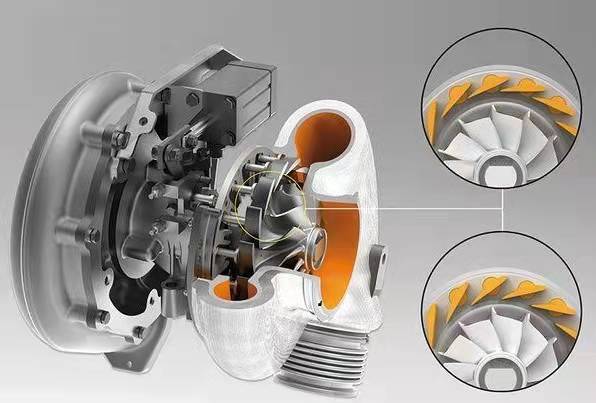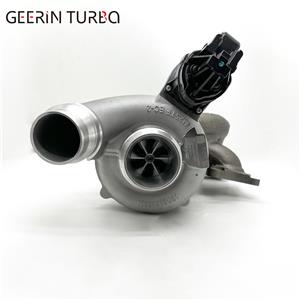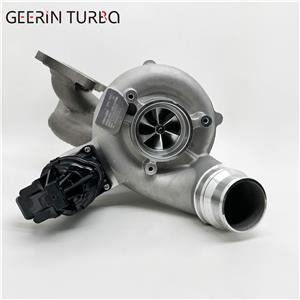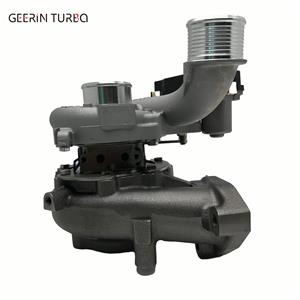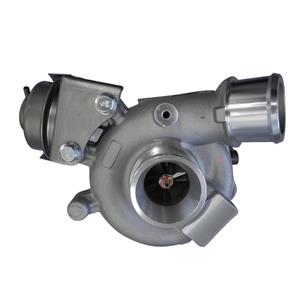What are the possible accidents when the turbocharger is under high pressure?
What are the possible accidents when the turbocharger is under high pressure?
1. The water temperature rises because the intake pressure supplied to the engine by the high-pressure turbocharger exceeds the pressure required by the engine by 3 to 5 times, resulting in airflow friction generating temperature, and when the intake air temperature is 1 degree higher, the engine's exhaust gas The temperature will increase by 3 degrees, causing the temperature of the engine to rise. Under normal circumstances, the installation of a high-pressure turbocharger will increase the temperature by about 10 degrees.
2. The early wear and tear of the engine. Because the pressure supplied by the high-pressure turbocharger to the engine is an unstable pressure, an irregular pressure wave. When the engine is running at high speed, the bypass valve of the turbocharger frequently opens and closes. This pressure wave continuously impacts the piston, cylinder liner, and piston ring. In this unstable environment, the four-part engine cannot withstand the impact. Under normal circumstances, a good engine needs to replace the four-part engine in 3-6 months after replacing the high-pressure turbocharger.
3. Poor performance in plateaus The performance of high-pressure turbochargers is poor in plateau conditions and cannot meet the performance requirements of the engine, because the engine temperature of the engine with high-pressure turbocharger is significantly increased in plateau areas. Although the intake pressure is high, the air density is reduced. In addition, the flow passage and steel wheel of the turbine of the high-pressure turbocharger are too small, which affects the exhaust flow of the engine, as if the exhaust brake of the engine is half-closed. State, so the engine loses the climbing ability of the plateau.
4. Short life of high-pressure turbocharger. In order to increase the pressure of the turbocharger, the high-pressure turbocharger has unlimitedly reduced the diameter of the steel wheel in the turbine box flow channel, so that the turbocharger has been running at overspeed, and the average speed is higher than the normal speed. In this state, the life of the high-pressure turbocharger is only 2/3 of that of the ordinary turbocharger, and the life of the high-pressure turbocharger of a small factory is even shorter.
5. life-threatening safety. Because the high-pressure turbocharger has been running at overspeed when the engine is running at high speed, the speed is 20,000 to 30,000 revolutions per minute higher than the ordinary turbocharger. In this state, the compressor impeller has to bear very The large centrifugal force, coupled with the rapid and frequent opening and closing of the bypass valve when the turbocharger speed reaches the limit, causes the turbocharger speed to increase and decrease frequently. At this time, the compressor impeller cannot withstand the airflow shock wave and centrifugal force. The burst causes the compressor casing to explode, and the speed of the compressor and impeller fragments flying out is equivalent to the speed of a bullet. It is very likely that the iron skin that penetrates the cab will damage the driver's body, endangering life and safety.
6. The lower exhaust is large and the exhaust oil is installed with a high-pressure turbocharger. The combustion situation in the cylinder has changed. The high-temperature and high-pressure gas becomes abnormally unstable. The cooperation between the piston ring and the cylinder liner makes it hard to match the cylinder The higher the pressure, the higher the cylinder pressure when the piston reaches the top dead center. The hard fit of the piston ring and the cylinder liner cannot completely seal the high-pressure gas. At this time, the high-pressure gas leaks into the crankcase as the piston moves up and down. There is also a part of the gas that leaks from the seal rings at both ends of the turbocharger to the crankcase through the gasoline pipeline. Because the pressure at both ends of the high-pressure turbocharger is too high, the seal rings at both ends cannot be completely sealed, resulting in partial pressure shell gas and The gas from the volute enters the crankcase with the gasoline pipe and is discharged into the atmosphere through the oil and gas separator installed on the engine. However, because the exhaust gas in the crankcase is too large, the oil is also discharged out of the engine.
7. Broken intercooler The intercooler is made of aluminum, which is used to cool the temperature of the air input to the engine from the supercharger, thereby reducing the air temperature and increasing the air density. However, due to the high air pressure provided by the high-pressure supercharger for the engine, the intercooler itself is an aluminum product with no elasticity and is very fragile. It is welded together by hundreds of hollow aluminum tubes. After the cooler, the intercooler cannot withstand high pressure and deforms and breaks.
When selecting the turbocharger model, it is not just necessary to match the installation holes randomly, but also to match the various pneumatic data of the factory. So you can’t choose a turbocharger arbitrarily, and many people may not know that the turbocharger can be repaired, and the price of the refurbishment is about one-third to one-fifth of the original new part. If the turbocharger It is also a good choice for intensive repair of original parts.
